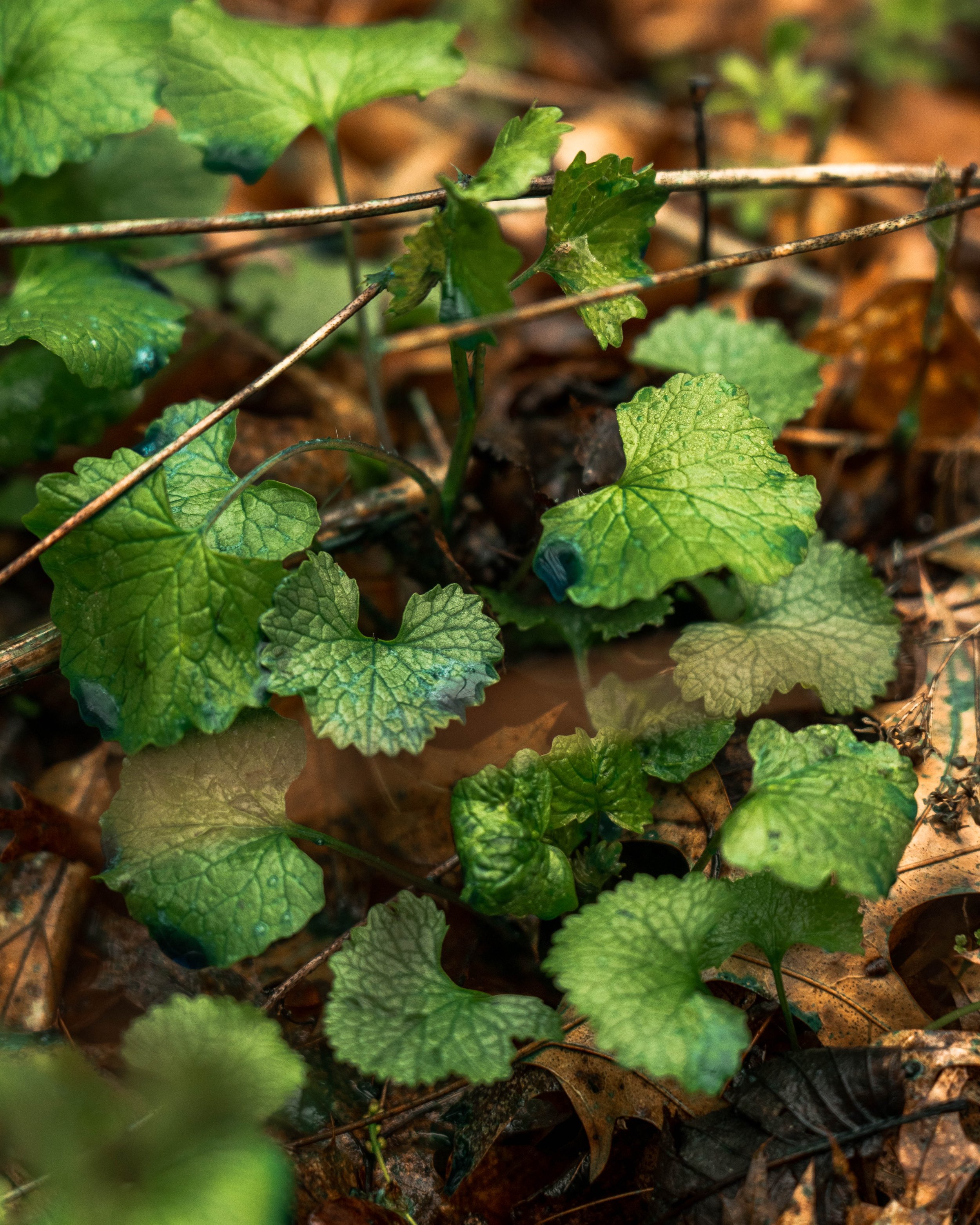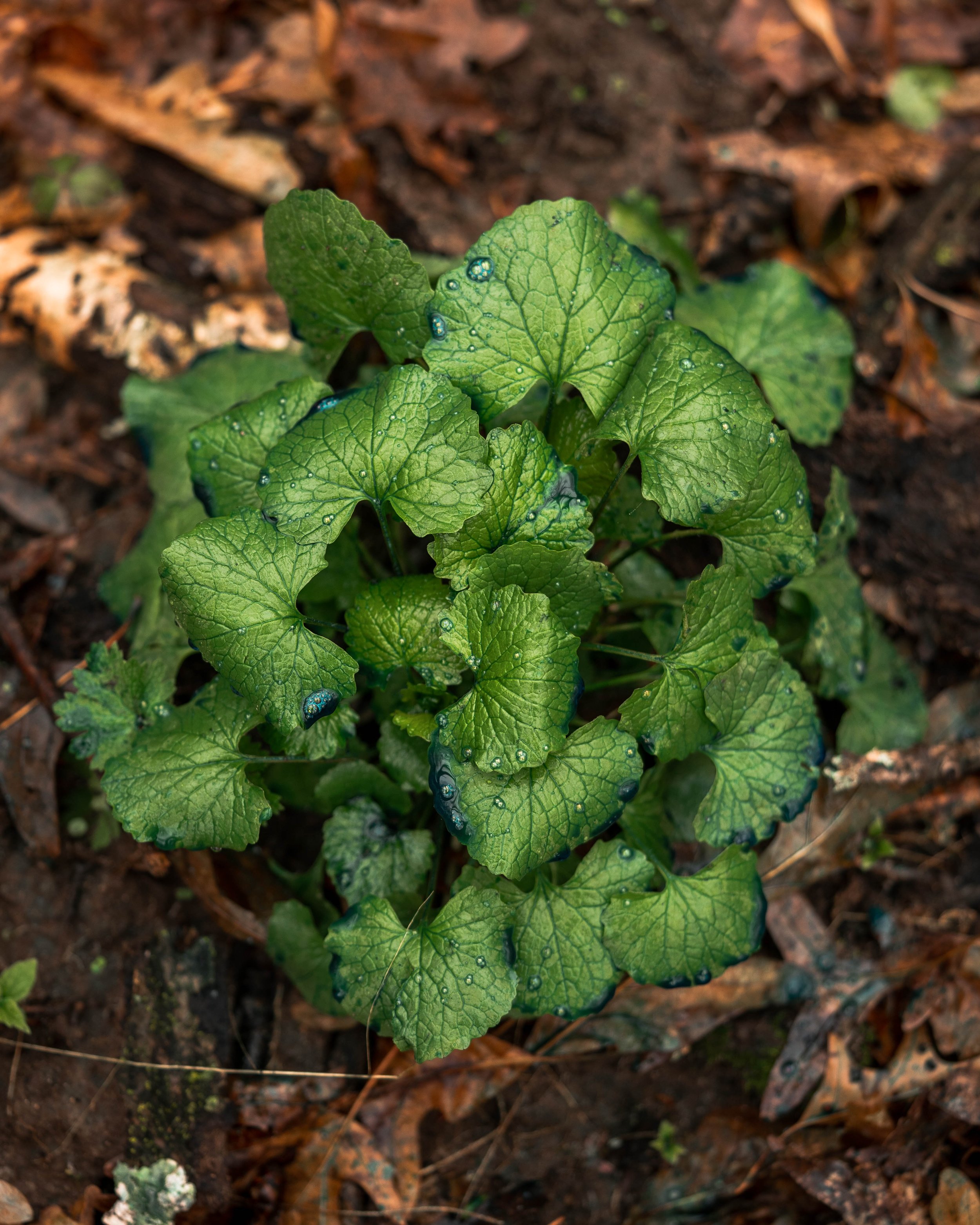Project Highlight: Garlic Mustard Management
During the months of May and June, our crews can be found combing through woodlands and forest edges with backpack sprayers, plastic bags, and occasionally brushcutters. These tools are the necessary implements for one of our common spring projects—garlic mustard (Alliaria petiolata) management. Garlic mustard is one of the most prevalent invasive species in Minnesota, and our crews spend many hours each spring managing this species. We treat garlic mustard in many popular county parks, as well as in private residences across the Twin Cities. So, this month, we’re going to highlight this unique spring project, and dive into the how’s and why’s of garlic mustard.
Garlic mustard is a biennial herbaceous plant that is originally from Eurasia. It was brought to the United States in the early 1800s due to its medicinal properties. As early as the 1860s, it was found growing in natural areas of New York and other east coast states where it was quickly gaining dominance in forest understories. Since then, garlic mustard has maintained a continuous march west. Garlic mustard tolerates shade, and tends to grow in forest understories, forest edges, and disturbed landscapes. During it’s first year of growth, it creates rosettes of heart shaped leaves. In it’s second year, garlic mustard shoots up a tall central stalk with a bunch of small white flowers at the top. It tends to grow in colonies that will expand with each consecutive year. Perhaps its most distinguishable trait is the scent of garlic from its crushed leaves or stem.
Garlic mustard is a problem plant for a number of reasons. First, it has no natural predators in the United States. In its native range, there are a number of insects that feed upon garlic mustard, controlling its growth. Where it has established in the United States, garlic mustard is resistant to herbivory, so there is no natural check on its populations. Secondly, garlic mustard roots release chemicals into the soil that inhibit mycorrhizal fungus that many native tree and plant species need to grow. Tree seedling establishment and species diversity both decrease in areas that are invaded by garlic mustard. Lastly, by reducing the abundance of native plants, garlic mustard can impact natural food chains, bringing instability into the ecosystem. Therefore, controlling garlic mustard growth and spread is important for maintaining native species diversity and ecosystem resilience against threats such as climate change.
We utilize a couple of different techniques for managing garlic mustard. Our crews will treat first-year plants in the rosette stage with a light concentration of herbicide. Once garlic mustard reaches adulthood and flowers, we will pull or cut the stems before they go to seed. All the material we pull, we will bag and remove from the site to prevent it from resprouting from the roots. This activity occurs in early spring, as garlic mustard grows quickly in the springtime. By the end of June, garlic mustard starts going to seed, and we have reached the end of our treatment window. At this point, we move onto treating other invasive species, and leave the remaining garlic mustard for treatment the next year. By managing garlic mustard over multiple years, we can slowly chip away at the population densities. While we may never truly eradicate this species from some areas, we can control the populations long enough to encourage native plants to recolonize the area. This is especially true in areas of disturbance where native plants will grow slower than garlic mustard—controlling garlic mustard in disturbed areas will give native species the time needed to fully establish their roots and begin growing competitively.
If you’ve spent any time outside near shady, wooded areas in the spring, you’ve likely seen garlic mustard. You may even have it on your own property. Taking steps to control garlic mustard on your own land and in your favorite outdoor haunts will go a long way to helping us control this invasive species across the entire landscape—every little bit helps! Look for the tall flower stalks in spring—May-June typically. If you find what you think is garlic mustard, but you’re not sure, crush the leaves in your hand and give it a whiff—garlic mustard will smell strongly like garlic.
To Remove It: Pull the plant up by the stem; make sure to pull up the main root with it. You can also cut the flowering stem off near the ground level. If you cut it too high up the stem, the plant will just reflower. Make sure to do this before the flower head goes to seed, typically by mid-late June.
To Dispose of It: Don’t leave the removed plants on the ground, as the roots might still climb back into the soil to resprout. Rather, bag the dead plant material and dispose of it. Some cities will have designated garlic mustard disposal sites. Composting is great, but only bring garlic mustard to a compost facility that is certified to take invasive species material. Composting of invasive species requires certain treatments to ensure the viable parts of the plant are fully destroyed. If neither of those are options near you, throw the garlic mustard in the trash. Alternatively, you can consume what you pull up. The leaves and stems of garlic mustard are edible, and can be used in salads, pesto, and garnish. Careful!—garlic mustard contains trace amounts of cyanide and should be soaked, cooked, or boiled. Eating it raw is not deadly, but should be avoided in excess.
Follow Up: Garlic mustard seeds can stay viable in the soil for up to 5 years. So even if you pull all the adults from a site, there’s a chance garlic mustard will still resprout from seed. Make sure to continue following up with removal for a few years to keep garlic mustard from recolonizing an area.
Volunteer: Many cities and counties offer garlic mustard volunteer events. This can be a family-friendly, fun way of getting outside, getting dirty, and helping protect native habitat. We encourage checking out these opportunities.






